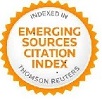New Methodological Contributions to Late Antique Rhetoric and Historiography
Keywords:
Late Antiquity, Rhetoric, Historiography, Christianity, PaideiaAbstract
This paper aims to analyse current bibliographical trends on the study of late antique rhetoric and historiography. After a brief survey of the modern methodologies, special attention will be paid to two recent publications by S. Elm and R. Cribiore. These works offer new methodological perspectives in the analysis of the works of key figures (the emperor Julian, Gregory of Nazianzus, and Libanius of Antioch) in the political, religious and cultural landscape of the fourth century AD.
Downloads
References
CAMERON, AV. (1991), Christianity and the Rhetoric of the Empire: The Development of Christian Discourse, Berkeley: University of California Press.
____ (2014), Dialoguing in Late Antiquity, Washington D.C.: Center for Hellenic Studies.
CLARE, A. (1927), The Language and Style of the Letters of St. Basil, Washington D.C.: Catholic University of America.
CRIBIORE, R. (2001), Gymnastics of the Mind: Greek Educationin Hellenistic and Roman Period, Princeton: University of Princeton.
____ (2013), Libanius the Sophist. Rhetoric, Reality, and Religion in the Fourth Century, Ithaca: Cornell University Press.
ELM, S. (2012), Sons of Hellenism, Fathers of the Church. Emperor Julian, Gregory of Nazianzus, and the Vision of Rome, Berkeley: University of California Press.
ENGELS, D. y VANNUFFELEN, P. (eds.) (2014), Religion and Competition in Antiquity, Bruselas: Latomus.
FOX, M. (1939), The Life and Times of St. Basil the Great as Revealed in His Works, Washington D.C.: Catholic University of America.
GARNSTEIN, B. (2006) Saving Persuasión: a Defence of Rhetoric and Judgement, Cambridge MA: Harvard University Press.
JACK, L.V. (1922), St. Basil and Greek Literature, Washington D.C.: Catholic University of America.
JONES, C.P. (2012), “The “Fuzziness” of Paganism”, Common Knowledge18:2, 249-254.
LIM, R. (ed.) (1995), Public Disputation, Power, and Social Order in Late Antiquity, Berkeley: University of California Press.
MARKUS, R. (1994), “How on Earth could places become Holy? Origins of the Christian idea of Holy Places”, Journal of Early Christian Studies 2.3: 257-71.
MARSHALL CAMPBELL, J. (1922), The Influence of the Second Sophistic on the Style of the Sermons of St. Basil the Great, Washington D.C.: Catholic University of America.
MCLYNN, N. (1994), Ambrose of Milan: Church and Court in a Christian capital, Berkeley: University of California Press.
NEIL, C. y LOSEBY, S. (eds.) (1996), Towns in Transition. Urban Evolution in Late Antiquity and the Early Middle Ages, Aldershot: Scolar
ROUSSEAU, P. (1994), Basil of Caesarea, Berkeley: University of California Press.
SHEPARDSON, C. (2014), Controlling Contested Places: late Antique Antioch and the Spatial Politics of Political Controversy, Berkeley: University of California Press.
TORRES GUERRA, J. (2014), “La literatura griega cristiana: una perspectiva clásica”, Estudios Clásicos 145, 71-94.
VAN HOOF, L. (ed.) (2014), Libanius. An Introduction, Cambridge: Cambridge University Press.
VAN NUFFELEN, P. (2014), “Not the last pagan: Libanius between elite rhetoric and religion”, en L. van Hoof (ed.) (2014), Libanius. An Introduction, Cambridge: Cambridge University Press, 293-314
VICKERS, B. (1988), In Defence of Rhetoric, Oxford: Clarendon Press.
WATTS, E. (2015), The Final Pagan Generation, Berkeley: University of California Press.












